Hello World magazine, our free magazine written by computing educators for computing educators, has been running for 5 years now. In the newest issue, Alan O’Donohoe shares his top tips for educators to make the most out of Hello World.
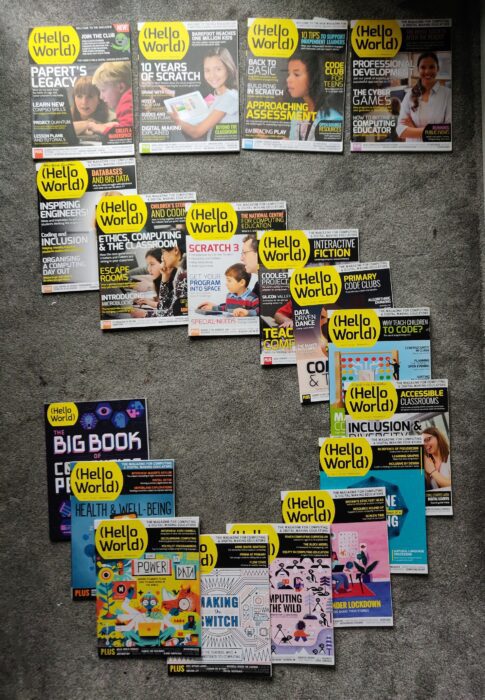
Alan has over 20 years’ experience teaching and leading technology, ICT, and computing in schools in England. He runs exa.foundation, delivering professional development to engage digital makers, supporting computing teaching, and promoting the appropriate use of technology.
Alan’s top tips
Years before there was a national curriculum for computing, Hello World magazines, or England’s National Centre for Computing Education (NCCE), I had ambitious plans to overhaul our school’s ICT curriculum with the introduction of computer science. Since the subject team I led consisted mostly of non-specialist teachers, it was clear I needed to be the one steering the change. To do this successfully, I realised I’d need to look for examples and case studies outside of our school, to explore exactly what strategies, resources and programming languages other teachers were using. However, I drew a blank. I couldn’t find any local schools teaching computer science. It was both daunting and disheartening not knowing anyone else I could refer to for advice and experience.
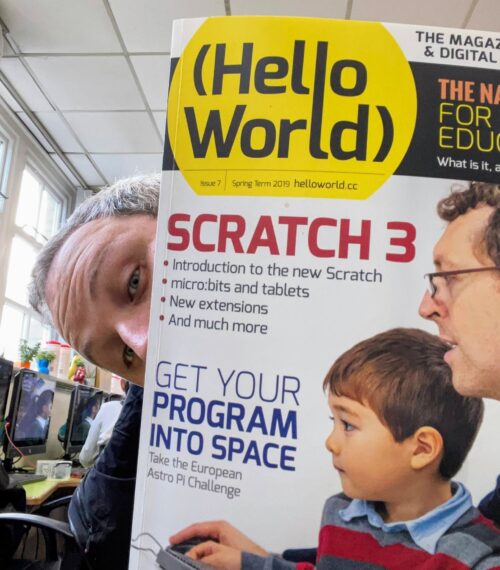
Thankfully, ten years later, the situation has significantly improved. Even with increased research and resources, though, there can still be the sense of feeling alone. With scarce prospects to meet other computing teachers, there’s fewer people to be inspired by, to bounce ideas off, to celebrate achievement, or share the challenges of teaching computing with. Some teachers habitually engage with online discussion forums and social media platforms to plug this gap, but these have their own drawbacks.
It’s great news then that there’s another resource that teachers can turn to. You all know by now that Hello World magazine offers another helping hand for computing teachers searching for richer experiences for their students and opportunities to hone their professional practice. In this Insider’s Guide, I offer practical suggestions for how you can use Hello World to its full potential.
Put an article into practice
Teachers have often told me that strategies like PRIMM and pair programming have had a positive impact on their teaching, after first reading about them in Hello World. Over the five years of its publication, there’s likely to have been an article or research piece that particularly struck a chord with you — so why not try putting the learnings from that article into practice?
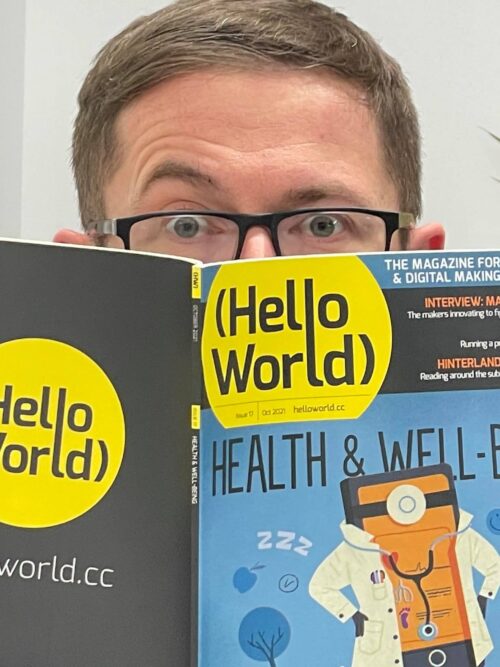
You may choose to go this route on your own, but you could persuade colleagues to join you. Not only is there safety in numbers, but the shared rewards and motivation that come from teamwork. Start by choosing an article. This could be an approach that made an impression on you, or something related to a particular theme or topic that you and your colleagues have been seeking to address. You could then test out some of the author’s suggestions in the article; if they represent something very different from your usual approach, then why not try them first with a teaching group that is more open to trying new things? For reflection and analysis, consider conducting some pupil voice interviews with your classes to see what their opinions are of the activity, or spend some time reflecting on the activity with your colleagues. Finally, you could make contact with the author to compare your experiences, seek further support, or ask questions.
Strike up a conversation
Authors generally welcome correspondence from readers, even those that don’t agree with their opinions! While it’s difficult to predict exactly what the outcome may be, it could lead to a productive professional correspondence. Here are some suggestions:
- Establish the best way to contact the author. Some have contact details or clues about where to find them in their articles. If not, you might try connecting with them on LinkedIn, or social media. Don’t be disappointed if they don’t respond promptly; I’ve often received replies many months after sending.
- Open your message with an introduction to yourself moving onto some positive praise, describing your appreciation for the article and points that resonated deeply with you.
- If you have already tried some of the author’s suggestions, you could share your experiences and pupil outcomes, where appropriate, with them.
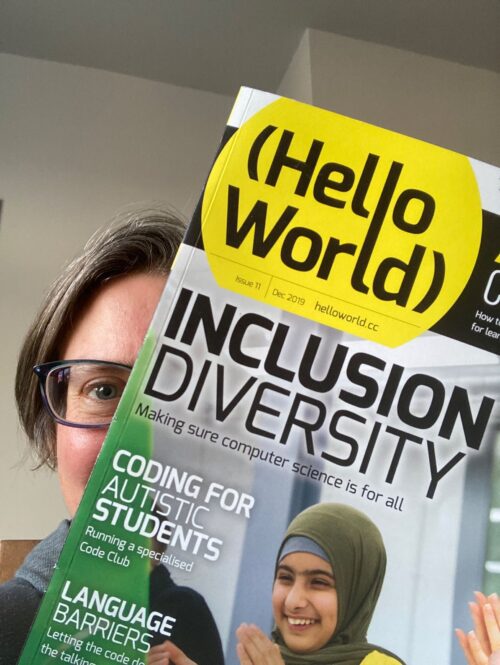
- Try to maintain a constructive tone. Even if you disagree with the piece, the author will be more receptive to a supportive tone than criticism. If the article topic is a ‘work in progress’, the author may welcome your suggestions.
- Enquire as to whether the author has changed their practice since writing the article or if their thinking has developed.
- You might take the opportunity to direct questions at the author asking for further examples, clarity or advice.
- If the author has given you an idea for an article, project, or research on a similar theme, they’re likely to be interested in hearing more. Describe your proposal in a single sentence summary and see if they’d be interested in reading an early draft or collaborating with you.
Start a reading group
Take inspiration from book clubs, but rather than discuss works of fiction, instead invite members of your professional groups or curriculum teams to discuss content from issues of Hello World. This could become a regular feature of your meetings where attendees can be invited to contribute their own opinions. To achieve this, firstly identify a group that you’re a part of where this is most likely to be received well. This may be with your colleagues, or fellow computing teachers you’ve met at conferences or training days. To begin, you might prescribe one specific single article or broaden it to include a whole issue. It makes sense to select an article likely to be popular with your group, or one that addresses a current or future area of concern.
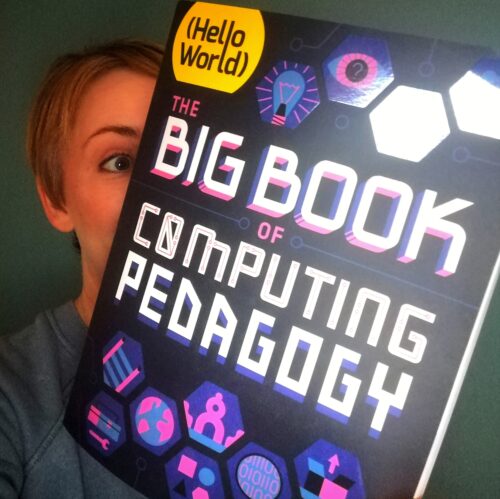
To familiarise attendees with the content, share a link to the issue for them to read in advance of the meeting. If you’re reviewing a whole issue, suggest pages likely to be most relevant. If you’re reviewing a single article, make it clear whether you are referring to the page numbers as printed or those in the PDF. You could make it easier by removing all other pages from the PDF and sending it as an attachment. Remember that you can download back issues of Hello World as PDFs, which you can then edit or print.
Encourage your attendees to share the aspects of the article that appealed to them, or areas they could not agree with the author or struggled to see working in their particular setting. Invite any points of issue for further discussion and explanation — somebody in the group might volunteer to strike up a conversation with the author by passing on the feedback from the group. Alternatively, you could invite the author of the piece to join your meeting via video conference to address questions and promote discussion of the themes. This could lead to developing a productive friendship or professional association with the author.
Propose an article
“I wish!” is a typical response I hear when I suggest to a teacher that they should seriously consider writing an article for Hello World. I often get the responses, “I don’t have enough time”, “Nobody would read anything I write”, or, “I don’t do anything worth writing about”. The most common concern I hear, though, is, “But I’m not a writer!”. So you’re not the only one thinking that!
“We strongly encourage first-time writers. My job is to edit your work and worry about grammar and punctuation — so don’t worry if this isn’t your strength! Remember that as an educator, you’re writing all the time. Lesson plans, end-of-term reports, assessment feedback…you’re more of a writer than you think! If you’re not sure where to start, you could write a lesson plan, or contribute to our ‘Me and my Classroom’ feature.”
— Gemma Coleman, Editor of Hello World
Help and support is available from the editorial team. I for one have found this to be extremely beneficial, especially as I really don’t rate my own writing skills! Don’t forget, you’re writing about your own practice, something that you’ve done in your career — so you’ll be an expert on you. Each article starts with a proposal, the editor replies with some suggestions, then a draft follows and some more refinements. I ask friends and colleagues to review parts of what I’ve written to help me and I even ask non-teaching members of my family for their opinions.
Writing an article for Hello World can really help boost your own professional development and career prospects. Writing about your own practice requires humility, analytical thinking and self reflection. To ensure you have time to write an article, make it fit in with something of interest to you. This could be an objective from your own performance management or appraisal. This reduces the need for additional work and adds a level of credibility.

If that isn’t enough to persuade you, for contributors based outside of the UK (who usually aren’t eligible for free print copies), Hello World will send you a complimentary print copy of the magazine that you feature in to say thank you. Picture the next Hello World issue arriving featuring an article written by you. How does this make you feel? Be honest — your heart flutters as you tear off the wrapper to go straight to your article. You’ll be impressed to see how much smarter it looks in print than the draft you did in Microsoft Word. You’ll then want to show others, because you’ll be proud of your work. It generates a tremendous sense of pride and achievement in seeing your own work published in a professional capacity.
Hello World offers busy teachers a fantastic, free and accessible resource of shared knowledge, experience and inspiring ideas. When we feel most exhausted and lacking inspiration, we should treasure those mindful moments where we can sit down with a cup of tea and make the most of this wonderful publication created especially for us.
Celebrate 5 years of Hello World with us
We marked Hello World’s fifth anniversary with a recent Twitter Spaces event with Alan and Catherine Elliot as our guests. You can catch up with the event recording on the Hello World podcast. And the newest Hello World issue, with a focus on cybersecurity, is available as a free PDF download — dive it today.
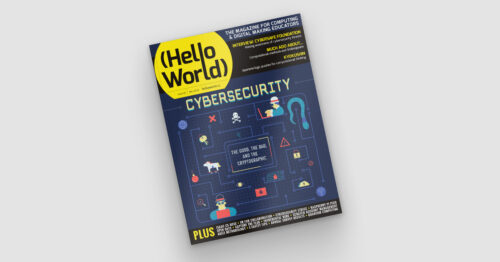
How have you been using Hello World in your practice in the past five years? What do you hope to see in the magazine in the next five? Let us know on Twitter by tagging @HelloWorld_Edu.
Website: LINK

